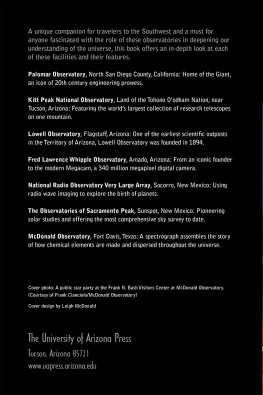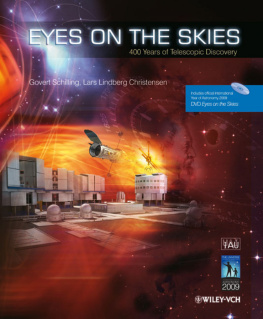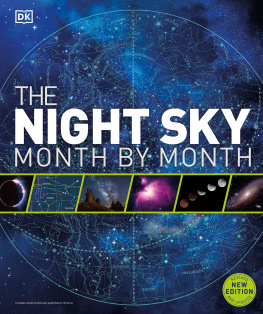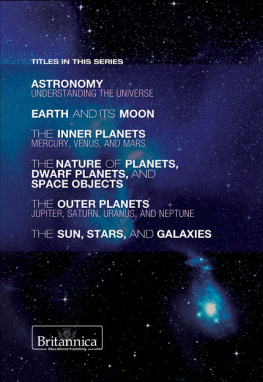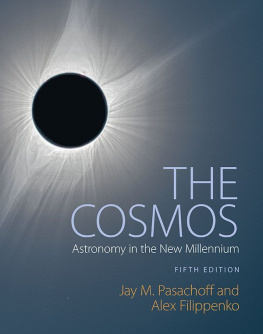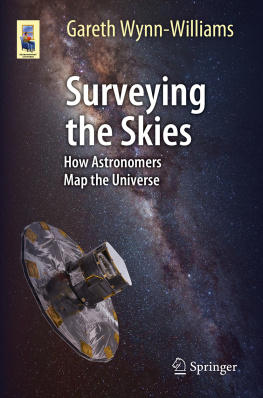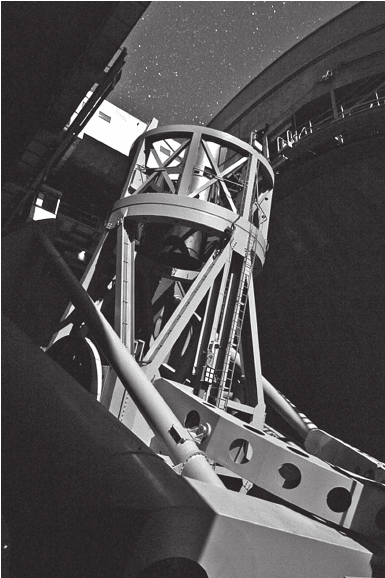Douglas Isbell - Observatories of the Southwest: A Guide for Curious Skywatchers
Here you can read online Douglas Isbell - Observatories of the Southwest: A Guide for Curious Skywatchers full text of the book (entire story) in english for free. Download pdf and epub, get meaning, cover and reviews about this ebook. year: 2016, publisher: University of Arizona Press, genre: Romance novel. Description of the work, (preface) as well as reviews are available. Best literature library LitArk.com created for fans of good reading and offers a wide selection of genres:
Romance novel
Science fiction
Adventure
Detective
Science
History
Home and family
Prose
Art
Politics
Computer
Non-fiction
Religion
Business
Children
Humor
Choose a favorite category and find really read worthwhile books. Enjoy immersion in the world of imagination, feel the emotions of the characters or learn something new for yourself, make an fascinating discovery.
- Book:Observatories of the Southwest: A Guide for Curious Skywatchers
- Author:
- Publisher:University of Arizona Press
- Genre:
- Year:2016
- Rating:5 / 5
- Favourites:Add to favourites
- Your mark:
Observatories of the Southwest: A Guide for Curious Skywatchers: summary, description and annotation
We offer to read an annotation, description, summary or preface (depends on what the author of the book "Observatories of the Southwest: A Guide for Curious Skywatchers" wrote himself). If you haven't found the necessary information about the book — write in the comments, we will try to find it.
With its clear skies and low humidity, the southwestern United States is an astronomers paradise where observatories like Kitt Peak have redefined the art of skywatching. The region is unique in its loose federation of like-minded research outposts and in the quantity and diversity of its observatoriesplaces captured in this unique guidebook.
Douglas Isbell and Stephen Strom, both intimately involved in southwestern astronomy, have written a practical guide to the major observatories of the region for those eager to learn what modern telescopes are doing, to understand the role each of these often quirky places has played in advancing our understanding of the cosmos, and hopefully to visit and see the tools of the astronomer up close. For each observatory, the authors describe its history, highlights of its contributions to astronomywith an emphasis on recent resultsand information for visitors. Also included are wide-ranging interviews with astronomers closely associated with each site.
Observatories covered range from McDonald in Texas to Palomar in California, with significant outposts in between: Arizonas Kitt Peak National Observatory southwest of Tucson, the Lowell Observatory in Flagstaff, and the Whipple Observatory outside Amado; and New Mexicos Very Large Array near Socorro and Sacramento Peak close to Sunspot. In addition to describing these established institutions, they also take a look ahead to the most powerful ground-based telescope in the world just beginning to operate at full power on Mount Graham in Safford, Arizona.
With more than three dozen illustrations, Observatories of the Southwest is accessible to amateur astronomers, tourists, students, and teachersanyone fascinated with the contributions that astronomy has made to deepening our understanding of humanitys place in the universe, whether exploring the solar system from Lowell Observatory or studying the birth of stars using the army of giant radio telescopes at the Very Large Array. This book aims to inspire visits to these sites by illuminating the major scientific questions being pursued every clear night beneath the dark skies of the Southwest and the amazing machinery that makes these pursuits possible.
Douglas Isbell: author's other books
Who wrote Observatories of the Southwest: A Guide for Curious Skywatchers? Find out the surname, the name of the author of the book and a list of all author's works by series.

